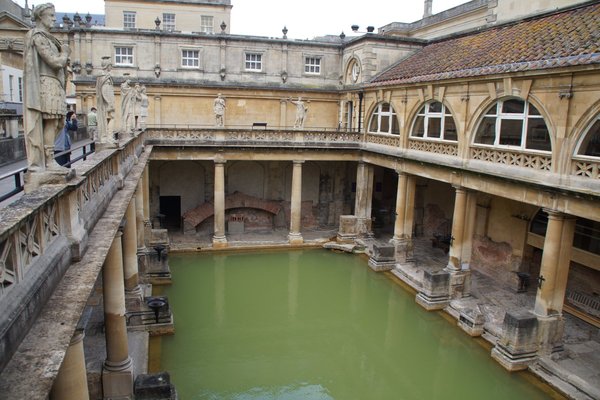United Kingdom
City of Bath
The City of Bath comprises a Roman and Georgian spa destination renowned for its Neo-classical Palladian architecture.
The city, centered around natural hot springs, was founded by the Romans as Aquae Sulis. The remains of their bath complex have been well-preserved. In the 18th century, monumental Neo-classical buildings were added to a new urban design to create a beautiful cityscape and strengthen Bath’s role as a spa city.
Community Perspective: The often-renovated Roman Baths require a high entrance fee (£28 in 2023) and are crowded, but are the highlight. The Georgian features can best be enjoyed when you visit on a sunny day when the warm creamy stone seems to glow.
Site Info
Official Information
- Full Name
- City of Bath (ID: 428)
- Country
- United Kingdom
- Status
-
Inscribed 1987
Site history
History of City of Bath
- 1987: Inscribed
- Inscribed
- Type
- Cultural
- Criteria
- i
- ii
- iv
Links
- UNESCO
- whc.unesco.org
- Official
-
- bathworldheritage.org.uk — Bath World Heritage City
All Links
UNESCO.org
- whc.unesco.org — whc.unesco.org/
Official Website
- bathworldheritage.org.uk — Bath World Heritage City
News Article
- April 24, 2022 somersetlive.co.uk — Bath's long awaited £5 million World Heritage Centre to open soon
- Sept. 20, 2019 somersetlive.co.uk — Bath World Heritage Centre to open in 2020 with underground access to Roman Baths
- Aug. 18, 2018 somersetlive.co.uk — Plans revealed for £3.4million revamp of Bath's Sydney Gardens
- April 26, 2013 bbc.co.uk — Part of Roman city's walls uncovered in Bath
- Nov. 14, 2009 guardian.co.uk — Bath saves its world heritage status ... just
Community Information
- Community Category
- Urban landscape: Urban continuity
Travel Information
One million visitors or more
Exact locations inscribed twice (or more)
London hotspot
Recent Connections
-
Universities
The entire campus of the University of …
-
Perfect Inscriptions
1987 -
Bridges with Buildings on them
Pulteney BridgeSee en.wikipedia.org
Connections of City of Bath
- Geography
- Trivia
-
-
Replica in Mini-Europe
Royal Crescent, Circus -
One million visitors or more
Visitor numbers to the Roman Baths have grown by 25% from 851,854 in 2022 to 1,061,240 in 2023. // The Roman Baths 1,093,856 (2016)
-
- History
-
-
Historic Resorts
"development increased during Georgian times in response to the increasing number of visitors to the spa and resort town who required accommodation" ... "The architects ......laid out new areas of housing for residents and visitors. Assembly rooms had been built early in the 18th century, but a new venue for balls, concerts and gambling was envisaged ......... construction started in 1769. The New or Upper Assembly Rooms opened with a grand ball in 1771 and became the hub of fashionable society" (Wiki) -
Celtic history
Bath: "The springs are thought to be the site of the Celtic pagan worship of the goddess Sul". (Great Spas of Europe Nomination File, p. 305) -
Coronation Locations
Edgar the "First King of All England" was crowned at Bath Abbey on May 11 973. This was the first "English" coronation recorded in any detail and formed the template for all subsequent ceremonies. A plaque on the East wall of the current building records the event. -
Ancient Roman colonies
Aquae Sulis
-
- Architecture
-
-
Palladio and Palladian style
Palladian Bridge in Prior Park -
English garden
Prior Park and Holburne Gardens -
Georgian Architecture
Circus, Royal Crescent
-
- Damaged
-
-
Damaged in World War II
"Bath suffered three air raids in reprisal for RAF raids on the German cities of Lübeck and Rostock, part of the Luftwaffe campaign popularly known as the Baedeker Blitz. Over 400 people were killed, and more than 19,000 buildings were damaged or destroyed. Houses in the Royal Crescent, Circus and Paragon were burnt out along with the Assembly Rooms, while the south side of Queen Square was destroyed. All have since been reconstructed, and regeneration work is continuing."
-
- World Heritage Process
-
-
Exact locations inscribed twice (or more)
Also part of Great Spa Towns of Europe -
Perfect Inscriptions
1987
-
- Religion and Belief
-
-
Benedictines
"In the City of Bath, the Abbey of Saints Peter and Paul occupies a central position adjacent to the King's Spring and occupies a site of a Roman temple, a Norman Cathedral and Benedictine monastery." "The baths were managed (...) for 800 years by a Benedictine monastery". (Great Spas of Europe Nomination File, p. 63, 438)
-
- Human Activity
-
-
Irrigation and drainage
A "system of Roman and modern pipe routes is developed in Bath (...) The Roman Great Drain is constructed to discharge used water into the River Avon." (Great Spas of Europe Nomination File, p. 276) -
Stone Quarries
The Comb Down and Bathampton Down mines date "from the 17th and 18th Century and were used to extract Bath stone for the city of Bath and elsewhere in the UK......An underground survey of the Firs and Byfield mine areas was carried out in 1994, commissioned by the then Bath City Council. It was found that approximately 80% of the mines had less than 6 m cover and as little as 2 m in some places. Irregular mining and robbing stone from supporting pillars had left the mines unstable...An Environmental Impact Assessment was completed for the stabilisation scheme ...... in December 2002. This highlighted that the mine is within the World Heritage Site of the City of Bath" (Wiki) -
Breweries
Abbey Ales -
Invention of sweets and pastries
Bath Bun - "a sweet roll made from a milk-based yeast dough with crushed sugar sprinkled on top after baking". Said to be invented by Doctor William Oliver from Bath in the 18th century (wiki) -
Leprosy
The Leper Hospital in the City of Bath (Great Spas of Europe Nomination File, p. 66, 279) -
Festivals
"The City [of Bath] hosts annual festivals including the celebrated Bath festival (of music) and the Mozart Festival". (Great Spas of Europe Nomination File, p. 442)
-
- Constructions
-
-
Canals
Kennet and Avon Canal -
Baths
-
Railways
Railway elements within the City Centre, among which: Bath Spa Railway station (built in 1840). An interesting aside is the fact that this site and others in Bath are ALSO included within the UK T List site of "Great Western Railway Paddington to Bristol Selected parts" -
Notable Bridges
Pulteney Bridge (1773, "one of only four bridges in the world with shops across the full span on both sides"), Ornamental Palladian Bridge in Prior Park -
Theatres and Opera Houses
Theatre RoyalSee en.wikipedia.org
-
Tunnels
Twerton Tunnel -
Cenotaph
the Bath cenotaph is located in Victoria Park -
Bandstand
Inside Royal Victoria Park -
Tea Houses
Assembly Rooms - Tea Room "This room was used for both refreshments and concerts in the 18th century (and was sometimes known as the Concert Room). During the evening entertainments there was an interval for tea, the cost being included in the price of a ball ticket. On Sundays there were public teas when admission cost sixpence per person." SeeSee austenonly.com
-
Chairs
The “Bath Chair” designed in the 18th C particularly for disabled persons.See en.wikipedia.org
-
Obelisk
At Queen Square: "erected by Beau Nash in 1738 in honour of Frederick, Prince of Wales"See en.wikipedia.org
-
Bridges with Buildings on them
Pulteney BridgeSee en.wikipedia.org
-
- Timeline
-
-
Built in the 18th century
For its Georgian buildings and heyday as a fashionable spa town - "The Assembly Rooms, built in 1771 by John Wood, Jr. and the Pump Room from 1793 to 1799 by Palmer in accordance with the plans Thomas Baldwin) harmonize with the grandiose proportions Assembly built of of monumental ensembles such as Queen Square (1729) and the -Royal Circus (1754), both works of John Wood Sr.; and especially, the Royal Crescent, an extensive row of dwellings in a half-circle formation built from 1767 to 1776 by John Wood" (AB) -
Built in the 1st century
Aquae Sulis, constructed in 60-70
-
- WHS Hotspots
-
-
London hotspot
Direct trains, about 1.5h
-
- Science and Technology
-
-
Botanical Gardens
In Royal Victoria ParkSee en.wikipedia.org
-
Scientific Developments
In 1781 William Herschel discovered the planet Uranus (orginally named "The Georgian Star" after the king!)using a home made telescope operated from the garden of his house in New King St (Now the Herschel Museum of Astronomy). It was the first planet to be discovered which could not be seen by the naked eye. -
Universities
The entire campus of the University of Bath is within the Core Zone of the WHS.
-
Astronomy and Astrology
"William Herschel came to Bath to be the organist at the Octagon Chapel and with his sister, Caroline, lived at Number 19 New King Street where they built their mirrors and telescopes and eventually in 1781 discovered a new planet, Uranus. Caroline was an accomplished astronomer and discovered three new nebulae and eight new comets." (Great Spas of Europe Nomination File, p. 295)
-
- WHS Names
-
-
Named after Queen Victoria
Royal Victoria Park was opened by Princess Victoria in 1830
-
- Literature & Film
-
-
Used in film as another WHS
Used as Paris with Pulteney Bridge and Weir standing in for the banks of the Seine in Les Miserables
-
News
- somersetlive.co.uk 04/24/2022
- Bath's long awaited £5 million Wor…
- somersetlive.co.uk 09/20/2019
- Bath World Heritage Centre to open…
- somersetlive.co.uk 08/18/2018
- Plans revealed for £3.4million rev…
Recent Visitors
Visitors of City of Bath
- AC
- Adam Hancock
- Adrian Turtschi
- Afshin Iranpour
- ailsa
- Albert
- Alberto Rodriguez Gutierrez
- alex
- Alexander Barabanov
- Alexander Lehmann
- Alex Baranda
- Alex Goh
- alicemears
- ALS
- A. Mehmet Haksever
- Ammon Watkins
- amychemu
- Ana
- Ana Lozano
- AndreaTLV
- Andrew_Kerr
- andyng-site
- Angela Vandyck
- Anna Wludarska
- Anne
- anthonybonbon
- Argo
- arnaugir
- Artsybrea
- ashombob
- Aspasia
- Assif
- Astraftis
- Atila Ege
- AYB
- Badwater
- basementonline
- BaziFettehenne
- BenReeve
- bethready
- Bill Maurmann
- Birgitte Sørensen
- BJGreasly
- Bluewonder310
- Bodil Ankerly
- Bram de Bruin
- Brandon J
- Bropyk
- brornt
- butterflybird
- c82wc1
- CampbellME
- campmany
- canadiantraveller
- Can SARICA
- Carlo Medina
- Carrascu
- Casey
- Caspar
- Catoplayer
- CeeCeeSR
- CeeMon
- Celina Nanbara
- Cezar Grozavu
- cflw
- chenboada
- CherylKla
- ChrisN
- Christer Sundberg
- Christine
- Christravelblog
- Chunsian01
- Claire Bradshaw
- Cluckily
- Clyde
- Cobaltrage
- Col
- Colossus
- cophbulls
- Coppi
- Corinne Vail
- Csaba Nováczky
- ctravel
- CugelVance
- cutecid
- czesioszpachelka
- Daniel Chazad
- Daniel Gabi
- dankir
- Danny L
- Dan Pettigrew
- dave wood
- David Aaronson
- David Berlanda
- DavidS
- David Scott King
- Deffra
- del
- Dennis Nicklaus
- Digits
- Dimitar Krastev
- Dirk-pieter
- dmscanlan
- Dolemite92
- Don Irwin
- Dorejd
- Doubanjiang
- Dr. Caligari
- Echwel
- edstar500
- eej
- Elaine McArdle
- Elena Y
- Elf21
- Elis
- Elisabeth Fransisca Situmorang
- eljx1988
- Ellen Nielsen
- Els Slots
- emvcaest
- Enid MC
- erdsaumnaht
- Erfe91
- Eric Lurio
- Erik Jelinek
- Errol Neo
- Eva Kisgyorgy
- Evgenii
- Fam39
- Fan Yibo
- Farinelli
- Feldhase
- Felicité
- Femke Roos
- Fernweh
- Filip Murlak
- finsbury_jo
- FK
- flahr
- forest80
- Frédéric M
- Frederik Dawson
- FS
- futtaimhb
- Garrett
- Garry Jackson
- Gary Arndt
- gautamiyer23
- Geert Luiken
- George Gdanski
- GeorgeIng61
- GerhardM
- Gilles
- Glenn Nightingale
- Grendel Gongan
- grimloch
- Grzegorz Andruszkiewicz
- Hadrianus
- HaraldOest
- Harry Mitsidis
- hazcraig16
- H Beswick
- Hdwilsonau
- henrik_hannfors
- heywhatever2
- Hubert
- Hughes1920
- Hunstow
- Iain Jackson
- Ian Cade
- Iara
- ih0000
- Ilya Burlak
- Ingemar Eriksson
- IreneKD
- Ivan
- Ivan Rucek
- ivantham
- Jaakkotoivanen
- Jacob Choi
- Jakob F.
- Jakubmarin
- James Bowyer
- James F
- janameerman
- janem
- Janina Lehmann
- Janos
- Jan-Willem
- Jan Zimmermann
- Jarek Pokrzywnicki
- Jarrod_Byham
- Jasam
- Javier Coro
- Jay T
- Jeanne OGrady
- JessicaDS
- Jezza
- JL
- J_neveryes
- João Aender
- Joel on the Road
- Jonas Hagung
- Jonas Kremer
- Jon Opol
- Jonoprout
- JoshHad
- Joyce van Soest
- JR's HERITAGE SITES
- jxrocky
- KarenBMoore
- Karito Vies
- kathryn.park
- kayakka
- Kbecq
- Kedp2023
- KeithBailey
- kelseyyurek
- Ken DJ
- KentishTownRocks
- Kevin Padley-Knight
- Kjsisney
- Klaus Freisinger
- KngAlaric
- Krijn
- Kurt Lauer
- kutasp
- Laetitia Yin
- Lara Adler
- Laurey
- Laurine
- LaVale
- Lazerway
- leckie118
- Lee Kai Loong
- Lembu
- Leonie Geurts
- Liamps91
- lichia
- Lillybett
- lindaann
- Lindaflat
- Linz
- Lithobates
- Loic Pedras
- Luboang
- lucyannesmith
- Ludvan
- Luis Filipe Gaspar
- Luj3904
- Lukasz Palczewski
- Lukemarshall
- lynnz317@aol.com
- Maciej Gil
- Mahuhe
- Malgorzata Kopczynska
- Małgosia Łupicka
- manman2411
- Mardigny
- Mariam
- Marinemajor
- Marlies van Wolfswinkel
- Martina Rúčková
- maryhattie
- Mateusz
- Mathijs
- Matthewsharris
- Max
- MaxHeAnouBen
- MaYumin
- Mazeman
- mg:1
- MH
- Michael Ayers
- MichaelH
- Michael Novins
- Michael Turtle
- Mikko
- Mikko Syrjä
- Milan Jirasek
- Ming_9734
- MMM
- Mohboh
- MoPython
- Mstrebl1990
- MWaters66
- Nafis N
- Naim Y
- nan
- natlefebvre@hotmail.
- Neil McPaul
- Niall Sclater
- Nicole Lampos
- Nihal Ege
- Nikolay Marinov
- nikosar
- Olli-Pekka Turunen
- opperpco3
- PabloNorte
- Pat Martin
- Patrik
- Patrik_globe
- Paul Schofield
- Peltzi
- PeterA
- PeterH
- Peter Lööv
- pete_simms
- Petteri
- Philipp Leu
- Philipp Peterer
- phillipmeng
- Pink Bunny
- Piotr Wasil
- Potsdamer
- pressdm
- puessergio
- Purrfect
- Qin Xie
- Rachel Perkins
- Ralf Regele
- Randi Thomsen
- reddargon
- Reiseblitz
- Reisedachs
- Reza
- Risson
- Roccobot
- Roger Ourset
- Roman Bruehwiler
- Roman Raab
- Ronbon
- Rosemary
- RyanJ
- Sabrina Liebehentschel
- Samy G
- sandersx2
- Sandra!
- saraleonela
- sbshipway
- scubarrie
- SDMArado
- SDunn242
- Sehnsuchtsbummler
- Sergio Arjona
- Shandos Cleaver
- sibariam
- Sijia
- sime147
- Simonf
- sliny
- Solivagant
- Spike Zou
- Squiffy
- Squire Sullen
- Ssong.x
- Stanimir
- Stanislaw Warwas
- StaziG
- stephanvermeulen
- stephhollett
- SteveD92
- Stijn
- Sturuss
- Sutul
- Svein Elias
- Szabolcs Mosonyi
- Szucs Tamas
- Tamara Ratz
- Tammy Gouldstone
- Tango
- Taotao Chen
- Tarquinio_Superbo
- Tatiana Nikulnikova
- Tevity
- Thomas Buechler
- Thomas Harold Watson
- Thomas van der Walt
- Tim Allen
- TimCC
- Timonator
- TimPick
- tingmelvin
- Tinuszke
- Tom Flaten
- tommasorossotti
- Tommy W
- Traveling Girl
- triath
- Tsunami
- Twobaconsandaboston
- usagi1974
- valentinaui
- ValiaVeweth
- VB73
- vhorne
- Viaje al Patrimonio
- Vincent Cheung
- VLabhard
- V&M
- voyager
- Walter
- Waters88
- Waxwing
- WestcountryWanderer
- WILLIAM RICH
- Wimmy
- Wojciech Fedoruk
- Wo_ko
- wolfboy
- Xiquinho Silva
- Yi Han Goh
- Yongcheng Liu
- Zach
- ZCTLife
- zinar7
- Zirconium796
- Zizmondka
- Zoë Sheng
- Zsuzsanna Forray
- Александар Стојиљковић
Community Reviews
Show full reviews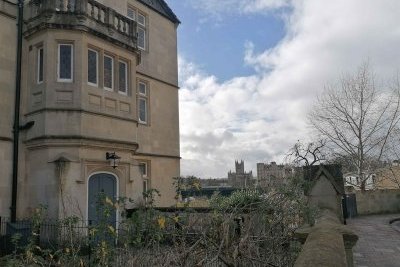
We visited Bath by way of the beautiful Bristol Temple Meads station in February for our anniversary. It's not the best time to see it, as anyone familiar with the wet weather of these isles could surmise, but it was an enriching time nonetheless. When the sun did decide to rear its head on the last of three days, the already beautiful Georgian architecture became all the better. Our first stop was the famed Royal Crescent, more precisely the No. 1 Town House exhibit. It's an odd visit with projections and dialogue from actors playing historical inhabitants, which does at least make it stand out from the myriad other preserved houses that the UK has (YMMV on how tacky it is, I found it as tasteful as something of that nature can be). More than anything else it turns a visit to the crescent from staring at the homes of the upper-middle class to an actual historical experience. A walk back to the hotel via the Pultney Bridge capped the day off. Day two took us to the other obligate activity, the eponymous baths, which had been top of my UK bucket list for some time. It's an absolutely beautiful spot so long as you aren't too fussed about the later additions. The main audio guide is much too verbose and dry for my liking, so it wound up being skimmed through quite a bit by the time I had reached the pool itself. It seems that Bath loves a …
Keep reading 0 comments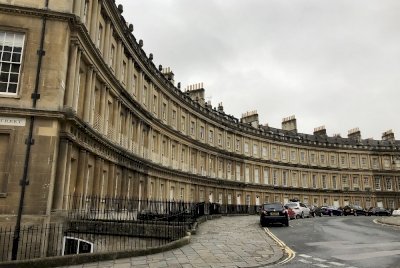
We’ve been to Bath, England twice, once in 2016 and again earlier this year. Each visit (once in winter and once in summer) made a significant impression on us. I’d wanted to visit Bath for over two decades, having heard about this cool town from a local girl at a summer camp years ago. Bath did not disappoint.
In many ways, there’s really two Baths…and we loved both of them. There’s the town’s history as Aque Sulis, a Roman outpost built on the banks of the Avon River. The town was founded at the spot of a naturally occurring hot springs. Even today, visitors (like us!) enjoy bathing in the warm Bath springs waters. No matter how much time you have in Bath, a dip in the healing waters is essential!
But there’s another Bath here. The city is jam packed with incredible examples of Georgian architecture. Georgian architecture being the period of British history when the country was ruled by the first four kings all named George (from 1714-1830). We love Georgian architecture and felt we were right at home here in Bath!
The town is charming, the hot springs are wonderful, the culinary scene is exceptional, so it’s easy to see why over four million people a year come to this university town to see it for themselves. A pro tip: stay overnight. Many people come to Bath on a day-trip from London, Bristol, or Cardiff. But the magic of Bath is at night when …
Keep reading 0 comments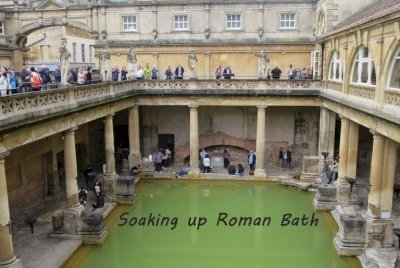
Again, just as with the Tower of London, I visited Bath on a school trip with a language school so had a little less freedom than I would have liked to explore Bath with its Georgian architecture and famous Roman baths.
The Circus and The Royal Crescent are the best examples of the architecture Bath has to offer, all built in the local Bath stone which is a beautiful sandy colour and makes the city very distinctive. I was surprised to learn that The Royal Crescent is actually just a facade and that the houses behind are of varying heights and sizes. There’s a popular green area in front of the crescent that’s very popular for picnics and photos.
The main draw for visitors to Bath is of course the Roman baths. However, in fact not much about the Roman baths as we see it today is Roman. The baths were seemingly destroyed in the 6th century by Anglo-Saxons and subsequent renovations have given us the ‘Roman’ baths that we see today. Only the rough parts of the lower walls, some steps, and the bath itself remain from Roman days. The Romans used this place as a religious shrine dedicated to the goddess Sulis Minerva and as a spa complex, however it was Bladud, a legendary king of the Britons, who is supposed to have discovered the curing properties of Bath’s waters as a result of his leprosy disappearing while in the area. The water itself comes from …
Keep reading 0 comments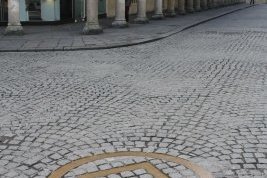
March 2018 - We had another night in our camper, this time in Exmoor NP. In the morning we wanted to have some Cheddar and went straight through the Name giving Gorge. Unfortunaley beside some tourist traps, there wasnt much for cheese lovers.
We arrived in Bath around 10 am. The city was already crowded with touristst and visiting school classes. We found a parking lot just at the Circus and walked for about two hous throught the Victorian city landscape. We also visited the roman bath but didnt enter. Lots of money for a reconstruction?! Interesting was also the bridge, when standing on it you dont even have the impression you are on a bridge. A little bit like Ponte Vecchio in Florence with all these shops.
The city is very intact and planned well. Nice to visit and take a step back in history. We enjoyed it very much and it was very realxing before we eventually went to Bristol.
Keep reading 0 comments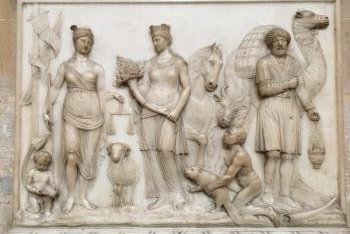
Visited October 2016. You can visit the city of Bath as a day trip from Bristol or even London. The train station Bath Spa is located just few hundred meters from the main attractions of the city.
Of course the most important monument is the museum located at the sites of ancient Roman baths. I can hardly imagine visiting these baths during summer weekends: even in October the place was so crowded and the line for the tickets so long – it took us almost one hour to get in! But when you’re inside, just enjoy the underground labyrinth of alleys. They have audio guides in many languages. After visiting the museum it is good to have a cup of tea in the Pump Room.
The medieval part of Bath is the Abbey Church of Saint Peter and Saint Paul, commonly known as Bath Abbey. Don’t miss the the sculptures of angels climb Jacob's Ladder on the west front and some very interesting memorials; one of them belonging to Sir William Baker, director of the East India Company (camel) and the governor of Hudson’s Bay Company (beaver).
The city is full of Georgian architecture: Royal Crescent, Circus, Gay Street, Pulteney Bridge.
Keep reading 0 comments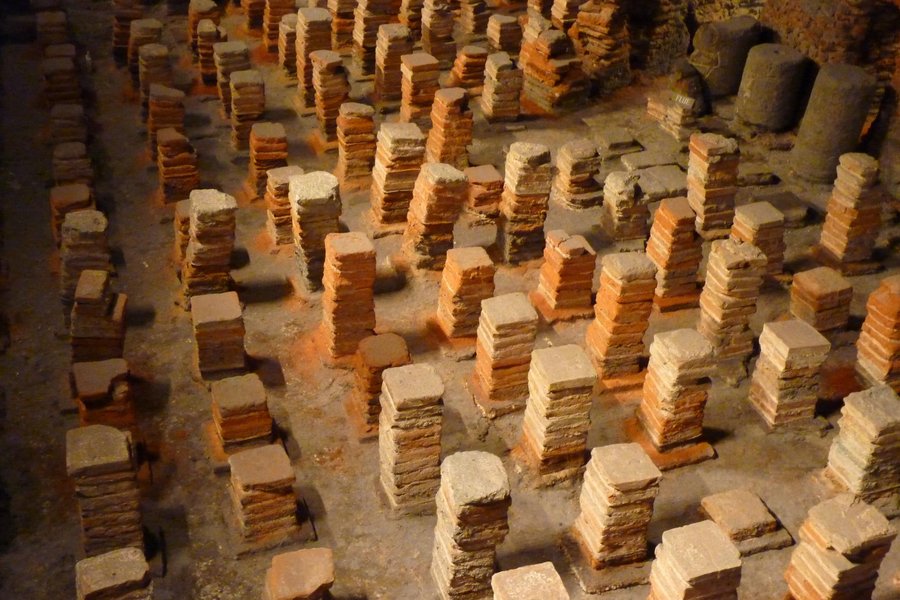
The City of Bath – my nearest WHS – is really two significant cities, one on top of the other (perhaps a bit like Aquileia). It have been there several times, including in May 2014 and July 2015. Bath is notable as both a Roman town “amongst the most famous and important Roman remains north of the Alps” and as a triumph of Georgian town planning.
Among the artifacts discovered in Bath is a fierce-looking carving that stood over the entrance. Archaeologists don’t agree on whom it is meant to depict – with snakes for hair it resembles a gorgon, except for the fact that gorgons were always female, and this face is clearly a man’s.
In addition to the bathhouse, Bath is famed for its consistent and extensive Georgian architectural style. This was the pet project of three 18th century architects under George III who set out to create in England one of the most beautiful cities in Europe. We crossed the river Avon, where a boat appeared to have taken a wrong turning, and walked up the impressive Great Pulteney Street toward Sydney Gardens.
I returned Bath the following summer. This time we went inside the preserved house, Number 1 Royal Crescent. It is a well-kept Georgian house with three stories and a prime position on the crescent, giving it an enviable view.
Keep reading 0 comments
I visited Bath on a short day trip in June 2013. It definitely deserves at least a long weekend but hopefully I'll visit again sometime. The Roman Baths and Pump Room are in very good condition and the audio guide or live guide tours are very informative and not at all boring. The sheer size of the baths is mindboggling. Pulteney Bridge is no Ponte Vecchio but still I enjoyed a quick stroll round the nearby gardens. All the buildings are very well kept and did not suffer any major damage during the Wars. The Royal Crescent and Circus are a work of art and worth a visit too. The locals are really friendly and very welcoming, so I next time I'll allow a longer visit to enjoy all the sights at a slower pace.
Keep reading 0 comments
I made the same experience as Josh from the USA. I attented an English Language Course in Bath and found the City very stunning. Because I lived in a house of London Road, I had to bear heavy traffic every day on my way to school, so I decided to take some pictures of the traffic, especially of the buses in the City Center: a small documentation of one of the main sources of air pollution in Bath.
http://www.fotogemeinschaft.de/v/fotografen/Klaus-Baum/bath/
Keep reading 0 comments
I found that Bath itself is quite a visually stunning city.It's large cathedral is somewhat stunning,particually so at the night time.I believe that it is best experienced at winter time.The only disappointment i found with bath is the ever-growing pollution and the large ammount of rubbish and litter.Even though, Bath is a nice place to live and visit with many things to do.
Keep reading 0 comments
I spent 6 months in 2003 at City of Bath as a Socrates-Erasmus student. This wonderful city created an lovely impression at me.
Its clean green parks, street entertainers, helpful people and Abbey Churchyard are forever written in my mind. Daily Bath is quite busy and full of tourists but City Centre at night is such a silent, amazingly lit and romantic place!
It is worth visiting for everyone!
Keep reading 0 comments
I have to say that I was somewhat disappointed by Bath. The Roman Baths are very impressive, very well preserved, and definitely worth a visit despite the price, but the rest of the city was a bit of a let-down. The cathedral is nice, but not really special, and the 18th-century buildings like the Royal Crescent are small and somehow inconspicuous. Go to Bath if you are in the area, but it's not really a must-see sight. Actually I liked nearby Bristol much more - a lively city with plenty to see and do.
Keep reading 0 comments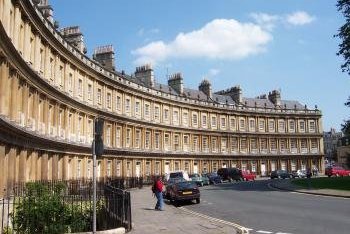
I have visited Bath on several occasions now and it is a really lovely city to visit, quintessentially English, but famous for its Roman roots. The whole city is made of local sandstone and it looks very impressive, especially if you manage to visit on a sunny day when the warm creamy stone seems to glow and liven up the whole centre. The interior of the Abbey is well worth a look as it has some impressive fan vaulting.
Perhaps one of the most impressive features and the most famous are the Roman baths, and I would strongly recommend paying the high entrance fee to see them, they really add to the whole experience and there is a lot more to see than just the central pool, the remains of the roman temple, which lie underneath the main square are particularly impressive.
Much of Bath's lay out and current architectural features are from the Neo-Classical Georgian period, which had a huge impact on the design of a huge number towns in Britain as well as further abroad (Edinburgh and Monticello/ University of Virginia are other WH sites where you can see this). Two of the most impressive examples of this style are the Circus and the Crescent which are a little further up through the town, providing a nice walk.
Bath is very easy to get to, it is on the main train-line from London to Wales easy to get to from the south as well, if you have a …
Keep reading 0 comments
Arriving from Cardiff by train, Bath presents itself as a clean, quiet and green city. The railway station even is called Bath Spa, a double hint to the town's claim to fame.
The Roman Baths lie in the city center, amidst the 21st century shops and restaurants. The baths are now 6 meters below street level: amazing to think how many building generations have passed to add so many new layers of bricks.
Descending to the ground floor where the actual baths are, you pass the elegant Pump Room. This has been the place to taste water from the spa for ages (I didn't). Further down, the museum proudly displays its topclass exhibits, as the almost intact bronze head of Minerva. Finally arriving at the baths you can sit and relax, imagening yourself to be a real Roman.
Keep reading 0 comments
